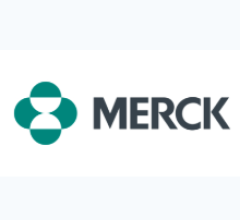
The DISRUPT CAD III study showed intravascular lithoplasty from Shockwave Medical was effective in breaking up calcified coronary lesions.
October 15, 2020 — Shockwave Medical's Intravascular Lithotripsy (IVL) system to treat severely calcified coronary artery lesions met the primary safety and effectiveness endpoints in the Disrupt CAD III study presented as a late-breaking trial at 2020 Transcatheter Cardiovascular Therapeutics (TCT) Connect virtual symposium of the Cardiovascular Research Foundation (CRF). The study was published simultaneously in the Journal of the American College of Cardiology (JACC). [1]
The study is the company's U.S. FDA investigational device exemption (IDE) study that will be used to seek a new coronary indication for the technology. It is currently cleared in the U.S. for peripheral arteries.
Disrupt CAD III is a prospective, multicenter, single-arm, global IDE study investigating the Shockwave Coronary IVL System in de novo, calcified, stenotic, coronary arteries prior to stenting. The study enrolled 384 patients at 47 sites in the United States, France, Germany, and the United Kingdom, including 100 patients in an optical coherence tomography (OCT) sub-study. All data were core-lab adjudicated.
CAD III represents one of the most challenging series of calcified lesions ever treated in an IDE, with all lesions determined by the core lab to be severely calcified. The average calcium lesion length was 47.9mm, and the average calcium arc was 292.5 degrees with a thickness of 0.96mm at the site of maximum calcification as measured by OCT.
“The correlation between calcium severity and poor percutaneous coronary intervention outcomes is well established and is a challenge we face on a daily basis in the cath lab. Given the severity of lesion and vessel calcium that was present in CAD III, it makes the findings of the study even more significant and noteworthy,” said Dean Kereiakes, M.D., FACC, FSCAI, medical director of The Christ Hospital Heart and Vascular Center and the Christ Hospital Research Institute; professor of clinical medicine, The Ohio State University; the co-principal Investigator of Disrupt CAD III. “The high rate of procedural success, combined with the low rate of major adverse cardiovascular events in CAD III, not only met the performance goals, but it also surpassed our expectations as investigators.”
Disrupt CAD III was based on a predicate study – the single-arm ORBIT II IDE study of orbital atherectomy – to develop performance goals that would allow FDA to evaluate the safety and effectiveness of IVL in a single arm study. Coronary IVL met both the safety and effectiveness goals in Disrupt CAD III with a 30-day freedom from major adverse cardiovascular events (MACE) rate of 92.2 percent (p<0.0001) and a procedural success rate of 92.4 percent (p<0.0001), respectively.
Coronary IVL prior to stent implantation was well tolerated with a low rate of major peri-procedural clinical and angiographic complications. The individual components of the 7.8 percent MACE rate included low rates of cardiac death (0.5 percent), myocardial infarction (7.3 percent), and target vessel revascularization (1.6 percent) at 30 days following the index procedure.
Freedom from any serious angiographic complication following IVL delivery and at any point during the procedure were 97.4 percent and 96.9 percent, respectively. Coronary IVL showed a low risk of complications, including perforation (0.3 percent), major dissection (0.3 percent), abrupt closure (0.3 percent), and slow flow/no reflow (0 percent) at the end of the procedure.
CAD III demonstrated the effectiveness of coronary IVL in treating calcium with large lumen gains that facilitated stent delivery. On the primary effectiveness endpoint of procedural success (92.4 percent), the individual endpoints included successful stent delivery in 99.2 percent of patients, a residual stenosis of less than 50 percent in all cases, and no in-hospital MACE in 93.0 percent of patients.
Despite the marked severity of the calcified lesions treated, IVL was able to cross and deliver therapy in 98.2 percent of lesions (377/384), which reflected successful stent delivery 99.2 percent of the time. At the end of the procedure post-stent, IVL resulted in an average acute gain of 1.7mm and an average final in-stent residual stenosis of 11.9 percent.
“The presentation and publication of the CAD III study is not only a significant milestone for the investigators and the company, but also for the interventional cardiology community at large,” said Keith D. Dawkins, M.D., Chief Medical Officer of Shockwave Medical. “CAD III sets a new benchmark for the treatment of complex coronary calcification. I want to commend the many physicians and their clinical coordinators for their diligent work in evaluating this novel technology.”
Shockwave C2 Coronary IVL catheters are commercially available for the treatment of de novo coronary artery disease in Europe and select other geographies; they are limited to investigational use in the United States.
Watch the VIDEO: Intravascular Lithotripsy to Treat Severely Calcified Coronary Artery Lesions — interview with Dean Kereiakes, M.D.
About Shockwave Medical Inc.
Shockwave is focused on developing and commercializing products intended to transform the way calcified cardiovascular disease is treated. Shockwave aims to establish a new standard of care for the interventional treatment of atherosclerotic cardiovascular disease through differentiated and proprietary local delivery of sonic pressure waves for the treatment of calcified plaque, which the company refers to as Intravascular Lithotripsy (IVL). IVL is a minimally invasive, easy-to-use and safe way to significantly improve patient outcomes.
For more information: www.shockwavemedical.com
Related Content on Intervascular Lithotripsy:
VIDEO: Demonstration of Intravascular Lithotripsy Breaking Up Calcium
FDA Grants Shockwave Medical Breakthrough Status for Coronary Intravascular Lithotripsy
Intravascular Lithotripsy: Will This New Investigational Technology Crack Calcium’s Code in the U.S.? — by Dean Kereiakes, M.D.
Intravascular Lithotripsy May Offer Solution for Calcified Coronary Lesions — By Azeem Latib, M.D.
VIDEO: Breaking Up Calcified Lesions Without Vessel Trauma — Interview with Todd Brinton, M.D.
Shockwave Launches Coronary Intravascular Lithotripsy in Europe
Lithotripsy Safe and Effective in Calcified Stenotic Peripheral Arteries
Shockwave Initiates U.S. Pivotal Study for Coronary Intravascular Lithotripsy
Reference:


 November 12, 2025
November 12, 2025 









